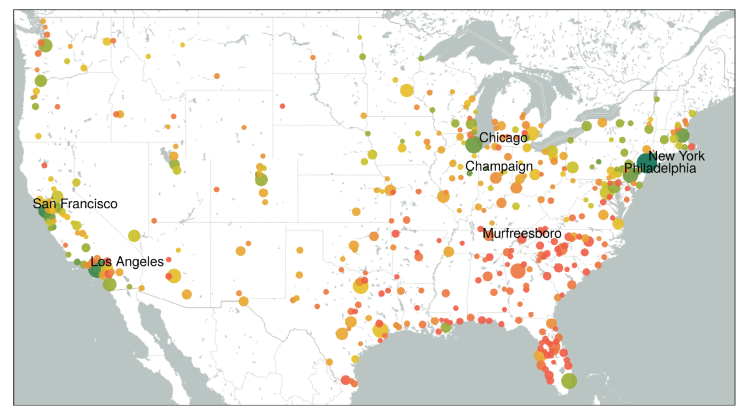Quantifying the 15-Minute City

Credit: Senseable City Lab
Favored as a pathway to promote more healthy, sustainable, and happy urban environments, the 15-minute city suggests clustering regular necessities and services within an easy fifteen minute trip from home. Through urban design and mobility planning, the 15-minute city aims to reduce dependency upon single occupancy vehicles and improve the quality of life for urban residents.
In America, urban dwellers travel an average of seven to nine miles to meet their commercial and recreational needs, far longer than the distances advocated for by proponents of the 15-minute city. Utilizing individual trip data from over 40 million mobile devices a research team from Senseable City Lab performed analyses to understand local trip patterns. Their findings highlight avenues for promoting a shift towards more local trips and quantify the social costs of prioritizing local mobility such as increased social isolation of marginalized communities.
“Large-scale, behavioral datasets open new avenues for informing policy and planning practice,” said Cate Heine, one of the lead authors of the paper and a doctoral candidate with the MIT Institute for Data, Systems, and Society. “We are able to identify nuanced patterns in local living that wouldn’t be otherwise apparent.”
Additional authors of the paper include: Senseable City Lab’s Timur Abbiasov, Carlo Ratti, Sadegh Sabouri, and Paolo Santi; Harvard University’s Edward Glaeser; and DUSP’s Arianna Salazar Miranda.
“Although US cities are far from the 15-minute ideal, our work shows that local living can be incentivized by improving access to local amenities and that one path to achieve this is to relax zoning regulations,” added Salazar Miranda.


